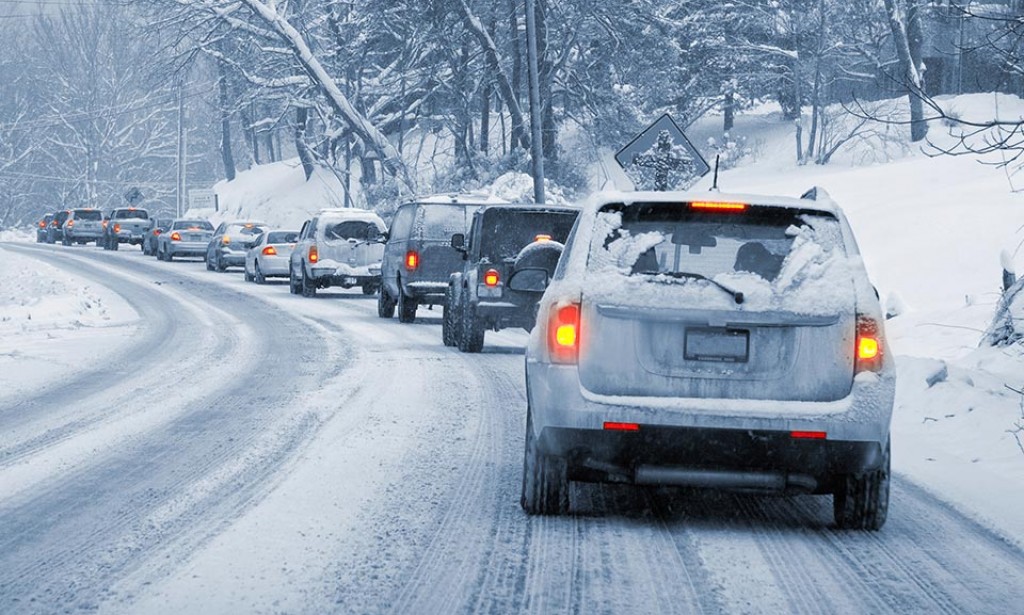For those of us who live in places with serious winters usually think about driving. While driving thinks differently about handling the wheels — it’s usually friction between the tires and the road which lets you accelerate, brake, and steer and that is a lot less in winter than in summer. When it comes to driving in snowy conditions first think about whether driving is necessary. If yes, then keep in mind the following tips
Drive Smoothly
The first way to drive safely is by smoothly controlling the wheel, accelerator, and brakes. Because the friction between the tire and road is reduced by the snow. So, any careless movement in the accelerator, wheels, or brakes can reduce the friction of the tire resulting in you losing control of the car.
Look Far Ahead
You should look far ahead of the road and think about your every move. What do you need to do next? While taking turns you should slow down and keep your concentration towards the road.
Look Where You Want to Go
If you think your car is slipping always look where you want to go. Let your vision take care of anything you try to avoid.
Sliding
What if your vehicle slides in the snow? First, never panic. If you do the right thing you can recover from the slide on snow. If you are trying to turn a corner, but the front tyres are slippery, steer the steering wheel and remove your foot from the brakes and accelerator. It may sound strange, but this is the best way to catch up, where you can get some control. If the tail of the car starts to slip, steer towards the skid and gently lower the accelerator and brakes. When you start to slide, never brake or accelerate too fast, as this will increase the slide.
Use Higher Gears
To make progress in snow, drive in higher gears than usual because higher gears provide less pulling power which causes the wheels less likely to slide. Try to increase gears slowly and steady because cars pick up a lot of speed in higher gears even without pressing the accelerator.
Check Wipers
First, make sure wipers are off before turning the ignition on as this can fuse the wipers if they are frozen on the screen. You need your vehicle wipers to be in good condition. So that they can work effectively.
Maintain Distance
You need to maintain a safe distance between you and the car ahead of you. Many accidents occur because drivers don’t maintain a safe distance.
Clean Windows and prepare the car
Don’t start driving until the windows are clean even if you are going on a short distance. It's always necessary to maintain your car. During winters the condition of the car is the most important factor in beating the elements of the winter. The key areas to check are wheels, screen wash, antifreeze, oil, wipers, and battery. You will need to know that car will get dirtier so always carry a paper towel or a piece of cloth to clean headlights and side windows.
Use Winter tyres
They provide good performance on wet roads in cold conditions. Having numerous groove gaps and an aggressive tread, these tyres have excellent grips on surfaces covered with snow and ice. These tyres have cuts in the rubber which provides more friction on wet and icy roads.
It is important that you understand the difference between different climate tyres.
For instance, if you are a truck driver, you will have to purchase a winter light truck tyre which can maintain traction in snow. Many people mistake quality with the specialty. It does not matter how good quality your tyres are, if they are not designed for winter, you cannot rely on them. For instance, Falken Linam Van01 are among the top-quality tyres which provide durability and performance for long mileage but that does not mean you can use them in harsh winter conditions. A tire like Falken Wildpeak A/T3W can deliver in snow.
Carry an Emergency Kit
While driving in extreme conditions always carry an emergency kit. I recommend the following are the things you should always carry:
● First-aid kit
● Rope
● Torch
● Fully charged batteries
● Warm clothes
● Engine oil
● Food and drink


You must be logged in to post a comment.